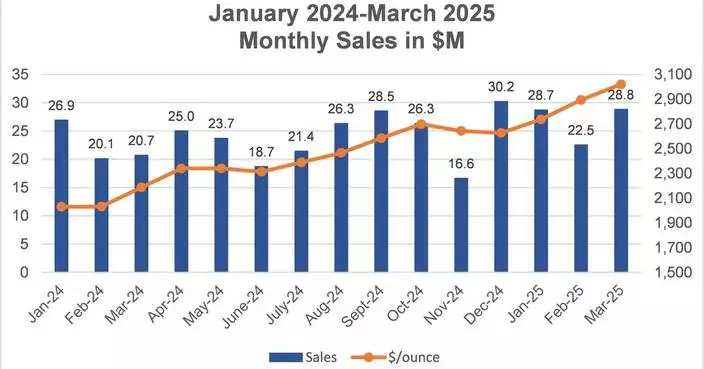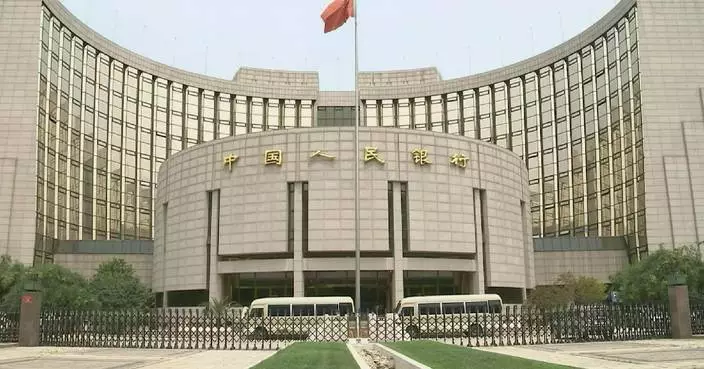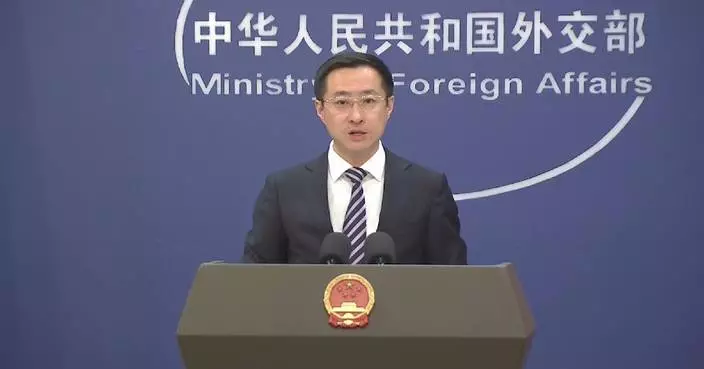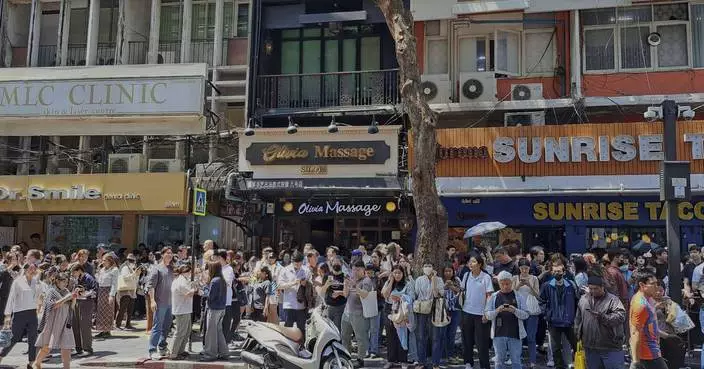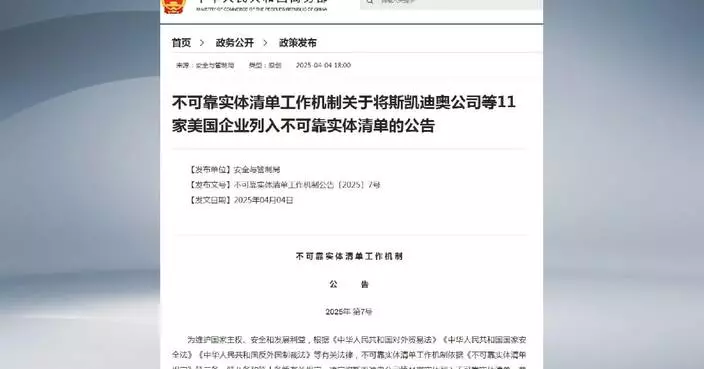CLEVELAND (AP) — Donovan Mitchell is expected to be ready for the Cleveland Cavaliers' playoff run despite missing the last four games of the regular season with a sprained left ankle.
The all-star guard was injured on April 6 during the second half against the Sacramento Kings. He worked out on the court before Sunday's game against the Indiana Pacers after getting a full workout in at the team's training facility on Saturday.
“I think he’ll be full on with practice. We’re going to have to scrimmage at some point, probably inter-squad with refs, so he’ll participate in that,” coach Kenny Atkinson said. “The most important thing is how we build him up with the ankle rehab and then conditioning.”
Mitchell was one of nine players, including four starters, that Cleveland sat out for Sunday’s regular-season finale. The Cavaliers (63-18) will go into the playoffs as the top seed in the Eastern Conference for only the fourth time in franchise history and first since winning the NBA title in 2016.
As the No. 1 seed, Cleveland's first playoff game is not expected to be until April 20 since the eighth seed in the East won't be determined until the final play-in tournament games on Friday.
Mitchell leads the Cavaliers in scoring, averaging 24 points per game. He is the only player in the league averaging at least 24 points in 32 minutes or fewer.
AP NBA: https://apnews.com/hub/nba

Cleveland Cavaliers' Donovan Mitchell cheers his Cavaliers team near the end of the second half of an NBA basketball game against the Chicago Bulls in Cleveland, Tuesday, April 8, 2025. (AP Photo/Phil Long)

Cleveland Cavaliers guard Donovan Mitchell reacts before walking off the court after an NBA basketball game against the Los Angeles Clippers, Sunday, March 30, 2025, in Cleveland. (AP Photo/David Dermer)
Wall Street pointed higher early Tuesday, a day after skepticism about the strength and safety of U.S. investments due to President Donald Trump’s trade war, and his attacks on the Fed Chair Jerome Powell, sent markets sharply lower.
Futures for the S&P 500 rose 0.8% before the bell, far from recovering the loss of 2.4% Monday. Futures for the Dow Jones Industrial Average also rose 0.8% and Nasdaq futures gained 0.9%. Both slumped more than 2% the day before as Trump stepped up his public criticism of Powell.
Trump has been demanding that the central bank lower its key interest rate to boost the economy. Trump called Powell “a major loser” and said that energy and grocery prices are “substantially lower" and that the central bank no longer needs to keep interest rates elevated to suppress inflation.
The Fed has resisted lowering rates quickly, which could reignite inflation after it soared to more than 9% during the height of the COVID-19 pandemic three years ago.
Any attempt to unseat Powell would likely set off a crisis in global financial markets. While Wall Street loves lower rates, largely because they boost stock prices, the bigger worry would be that a less independent Fed could struggle to keep inflation under control. Such a move could further weaken, if not kill, the United States’ reputation as the world’s safest place to keep cash.
Longer-term yields have been on the rise lately with doubts about the United States’ standing in the global economy. The yield on the 10-year Treasury climbed to 4.43% overnight before settling at 4.39% in the morning. That's still up from 4.34% at the end of last week about 4% earlier this month, a substantial move for the bond market.
The U.S. dollar edged down to 140.24 Japanese yen from 140.80 yen. The dollar has been weakening against the yen and other currencies, and traded momentarily as low as 139 yen on Monday, a 52-week low.
In equities trading early Tuesday, First Solar jumped 7.2% after the Department of Commerce finalized harsher-than-expected solar tariffs on some southeast Asian communities.
Northrop Grumman tumbled 10.6% after it reported that its first-quarter sales fell from a year ago. The military contractor also saw its profit nearly halved as it charged a big loss related to higher manufacturing costs for its B-21 bomber program.
Technology companies, which have taken some of the biggest beatings during the recent market volatility, inched up in premarket Tuesday. Nvidia and Meta Platforms rose less than 1% before the bell.
Meta shares have declined for seven consecutive days, the longest losing streak for the company since April 2023.
One day after plummeting another 6%, Tesla shares inched up less than 1% in premarket ahead of its quarterly earnings report after the bell Tuesday.
Elon Musk's electric car company has already reported that its first-quarter car sales dropped by 13% from the same time last year. That decline occurred against a backdrop of vandalism, widespread protests and calls for a consumer boycott amid a backlash to Musk’s high-profile role in the White House overseeing a cost-cutting purge of U.S. government agencies.
Tesla shares are down about 40% since the beginning of 2025.
In Europe at midday, France's CAC 40 and German's DAX each declined 0.7%, while Britain's FTSE 100 was mostly unchanged.
Trading was cautious in Asia, where the benchmark Nikkei 225 lost 0.2% to finish at 34,220.60. Australia's S&P/ASX 200 was virtually unchanged, inching down less than 0.1% to 7,816.70. South Korea's Kospi lost nearly 0.1% to 2,486.64. Hong Kong's Hang Seng added nearly 0.8% to 21,562.32, while the Shanghai Composite added 0.3% to 3,299.76.
Trump's tariffs and the retaliatory measures from China hang as a shadow over the region.
"Across Asia, there is undoubtedly a sense of urgency to get to the negotiation table even as striking a deal at an appropriate cost can be tough," said Tan Boon Heng, at Mizuho Bank's Asia & Oceania Treasury Department.
“China’s warning to countries not to resolve U.S. tariffs by striking deals at the expense of Beijing’s interests reveals the geo-economic polarization.”
In energy trading, benchmark U.S. crude gained 93 cents to $63.34 a barrel. Brent crude, the international standard, rose 88 cents to $67.14 a barrel.
——

Currency traders watch monitors near a screen showing the Korea Composite Stock Price Index (KOSPI), top left, and the foreign exchange rate between U.S. dollar and South Korean won, top center, at the foreign exchange dealing room of the KEB Hana Bank headquarters in Seoul, South Korea, Tuesday, April 22, 2025. (AP Photo/Ahn Young-joon)

Currency traders work near a screen showing the Korea Composite Stock Price Index (KOSPI) and the foreign exchange rate between U.S. dollar and South Korean won, top right, at the foreign exchange dealing room of the KEB Hana Bank headquarters in Seoul, South Korea, Tuesday, April 22, 2025. (AP Photo/Ahn Young-joon)

A currency trader watches monitors near a screen showing the Korea Composite Stock Price Index (KOSPI) at the foreign exchange dealing room of the KEB Hana Bank headquarters in Seoul, South Korea, Tuesday, April 22, 2025. (AP Photo/Ahn Young-joon)













